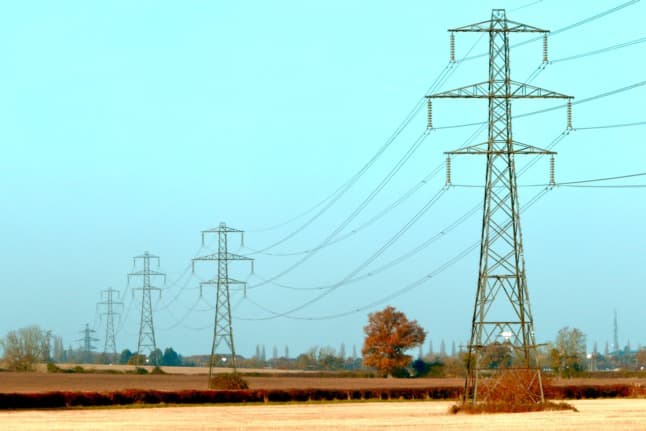Could Norway be forced to ration electricity, and what would that mean for you?

Consumers in Norway are already feeling the pinch due to record-high energy prices, and now analysts have warned that energy rationing could be on its way.
The average household in southern Norway is currently shelling out three times more than it usually would this time of year on electricity due to record energy prices caused by a combination of dry weather and soaring prices on the continent.
On Thursday, the price of electricity in the south hit 1.23 kroner per kilowatt-hour, excluding surcharges, grid rent and other fees. In central and northern parts of the country, the current cost of electricity is around half of that.
READ MORE: EXPLAINED: Why are energy costs soaring in southern Norway?
Power analyst from Volue Insight, Tor Reier Lilleholt, believes that all of these factors could lead to electricity rationing in the south.
“With the water reservoir forecasts we have, we must talk about the possibility that here there maybe rationing in the spring,” Lilleholt told financial news site E24.
“This means that then consumption will be forcibly switched off. The Norwegian Water Resources and Energy Directorate (NVE) and Ministry of Energy would take over the water that’s left in the reservoir,” Lilleholt warned.
READ ALSO: Rising energy prices in Norway: How to get the best deal
The power analyst said that the NVE was probably already gearing up for campaigns cautioning people to save electricity.
The severity of the rationing implemented by the power authorities would depend on the situation, but in any eventuality it would hit consumers hard. Two types of rationing could be introduced.
Firstly, there's quota rationing, which is where households are given electricity allowances and any energy used over this amount is charged at excessively high prices as a deterrent.
If the quota rotation doesn't work then controlled outages will be used. The outages will rotate between areas at designated times. This is a last resort option for the authorities. This is called zonal rotary disengagement.
Lilleholt did urge that this scenario was a while off from happening, and the probability of such an event occurring wouldn’t be fully clear until the spring.
Marius Holm Rennesund, a power analyst from Thema Consulting, said that he said there was a relatively low probability of power being rationed, but he did say that it was almost inevitable that prices would continue to sky-rocket
“It is clear that we have to go up to higher price levels to import power,” he said.
The two analysts agreed in concluding that the only way that price hikes throughout the winter could be avoided would be if the region sees a very wet October to replenish hydroelectric stocks.
Comments
See Also
The average household in southern Norway is currently shelling out three times more than it usually would this time of year on electricity due to record energy prices caused by a combination of dry weather and soaring prices on the continent.
On Thursday, the price of electricity in the south hit 1.23 kroner per kilowatt-hour, excluding surcharges, grid rent and other fees. In central and northern parts of the country, the current cost of electricity is around half of that.
READ MORE: EXPLAINED: Why are energy costs soaring in southern Norway?
Power analyst from Volue Insight, Tor Reier Lilleholt, believes that all of these factors could lead to electricity rationing in the south.
“With the water reservoir forecasts we have, we must talk about the possibility that here there maybe rationing in the spring,” Lilleholt told financial news site E24.
“This means that then consumption will be forcibly switched off. The Norwegian Water Resources and Energy Directorate (NVE) and Ministry of Energy would take over the water that’s left in the reservoir,” Lilleholt warned.
READ ALSO: Rising energy prices in Norway: How to get the best deal
The power analyst said that the NVE was probably already gearing up for campaigns cautioning people to save electricity.
The severity of the rationing implemented by the power authorities would depend on the situation, but in any eventuality it would hit consumers hard. Two types of rationing could be introduced.
Firstly, there's quota rationing, which is where households are given electricity allowances and any energy used over this amount is charged at excessively high prices as a deterrent.
If the quota rotation doesn't work then controlled outages will be used. The outages will rotate between areas at designated times. This is a last resort option for the authorities. This is called zonal rotary disengagement.
Lilleholt did urge that this scenario was a while off from happening, and the probability of such an event occurring wouldn’t be fully clear until the spring.
Marius Holm Rennesund, a power analyst from Thema Consulting, said that he said there was a relatively low probability of power being rationed, but he did say that it was almost inevitable that prices would continue to sky-rocket
“It is clear that we have to go up to higher price levels to import power,” he said.
The two analysts agreed in concluding that the only way that price hikes throughout the winter could be avoided would be if the region sees a very wet October to replenish hydroelectric stocks.
Join the conversation in our comments section below. Share your own views and experience and if you have a question or suggestion for our journalists then email us at [email protected].
Please keep comments civil, constructive and on topic – and make sure to read our terms of use before getting involved.
Please log in here to leave a comment.